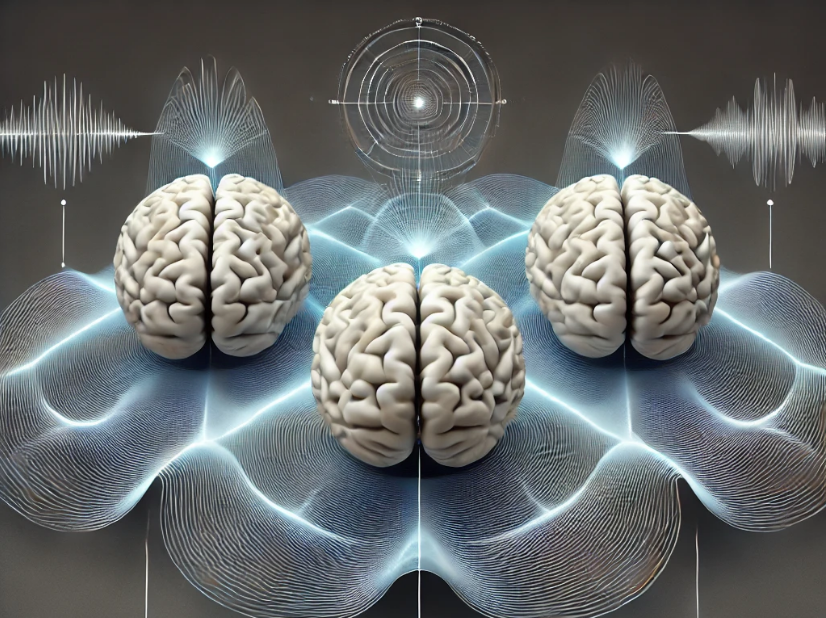Synthesis: The Free Energy Principle and the Objectification of Perceived Structures

DOI: 10.13140/RG.2.2.10654.75846
Florian Lüders, MD
Introduction
In the domains of philosophy and cognitive science, a persistent question arises: how do individuals perceive their reality, and by what mechanisms do they stabilize their objectification of structures? Immanuel Kant’s notion of the noumenon—the “thing-in-itself,” which remains beyond direct human perception—offers an epistemological framework suggesting that our understanding of reality is always mediated by cognitive structures. In parallel, Werner Heisenberg’s conception of the collapse of the wave function in quantum mechanics proposes that observation crystallizes potentialities into definitive states only in the act of measurement. These perspectives point to a deeper understanding of reality as something shaped by a dynamic interplay between internal cognitive mechanisms and external influences.
Karl Friston’s Free Energy Principle (FEP), emerging from the intersection of neuroscience and systems theory, extends these ideas. The FEP posits that the brain acts as a prediction machine, minimizing uncertainty and surprise by continually updating its internal models to align with sensory inputs. The synthesis of the FEP with the philosophical insights of Kant and the physics of Heisenberg opens new avenues for understanding how individuals objectify perceived structures through biological, cognitive, and social mechanisms.
The Free Energy Principle and the Brain as a Prediction Machine
The Free Energy Principle asserts that living organisms—and particularly the human brain—are inherently driven to minimize free energy. In this context, free energy represents the difference between the brain’s predictions and the actual sensory inputs it receives from the external world. This discrepancy, or uncertainty, is something the brain seeks to reduce through the continuous adjustment of its internal models, shaped by past experience and biological predispositions. In doing so, perceptions and actions converge upon the goal of confirming these predictions.
In terms of perception, this principle suggests that the brain does not passively receive sensory information. Rather, it actively generates hypotheses about the environment, using incoming sensory data to either confirm or adjust its expectations. This self-corrective process, whereby the brain continually refines its model of reality, mirrors the manner in which individuals collapse a multitude of potential perceptions into a single, stabilized reality—much like the collapse of the wave function in quantum mechanics.
The Noumenon and Social Interaction
Kant’s concept of the noumenon—the “thing-in-itself”—remains unattainable to human cognition because the mind operates within the constraints of its models of reality, which are themselves shaped by experience and prediction. These mental models are informed not only by biological mechanisms but also by social interaction. Social expectations, cultural norms, and interpersonal experiences play a pivotal role in shaping individual perceptions. The process of objectifying structures can therefore be seen as a socially and biologically mediated act, wherein the brain “collapses” probabilities into a coherent reality.
Friston’s principle complements Kant’s epistemology by providing a mechanistic account of how the brain approaches the noumenon indirectly. Reality, as it is experienced, is filtered through predictive models influenced by both social and biological factors. Thus, what we perceive as reality is, in fact, a construct of both our cognitive faculties and shared social conditions.
Synthesis: Individual Objectification and the Minimization of Free Energy
Synthesizing the Free Energy Principle with Kant’s epistemology and Heisenberg’s collapse of the wave function provides a deeper insight into the nature of perception. The human mind, functioning as a prediction machine, minimizes uncertainty by integrating sensory inputs into coherent and stabilized perceptions. The objectification of perceived structures, therefore, occurs through the filtering and guidance of both social interactions and biological predispositions.
The FEP suggests that individuals “collapse” their personal reality by minimizing free energy, and this process is driven by both internal biological mechanisms and external social influences. In this sense, the individual’s perception of structures emerges as the result of predictive and corrective processes, ultimately forming a stable, subjective, and yet intersubjectively coherent reality.
Conclusion
The integration of Friston’s Free Energy Principle with Kant’s noumenon and Heisenberg’s wave function collapse offers new ways to understand the individual’s objectification of structures. This synthesis demonstrates that perception is the product of a dynamic interaction between biological, cognitive, and social mechanisms, all aimed at reducing uncertainty and generating a coherent experience of reality. The reality perceived by individuals is thus a construct—one that is anchored in biology yet profoundly shaped by social context.
References
- Friston, K. (2010). The free-energy principle: a unified brain theory? Nature Reviews Neuroscience, 11(2), 127-138.
- Kant, I. (1781). Critique of Pure Reason.
- Heisenberg, W. (1927). „On the perceptual content of quantum theoretical kinematics and mechanics.“ Zeitschrift für Physik, 43(3-4), 172–198.
Publikation: